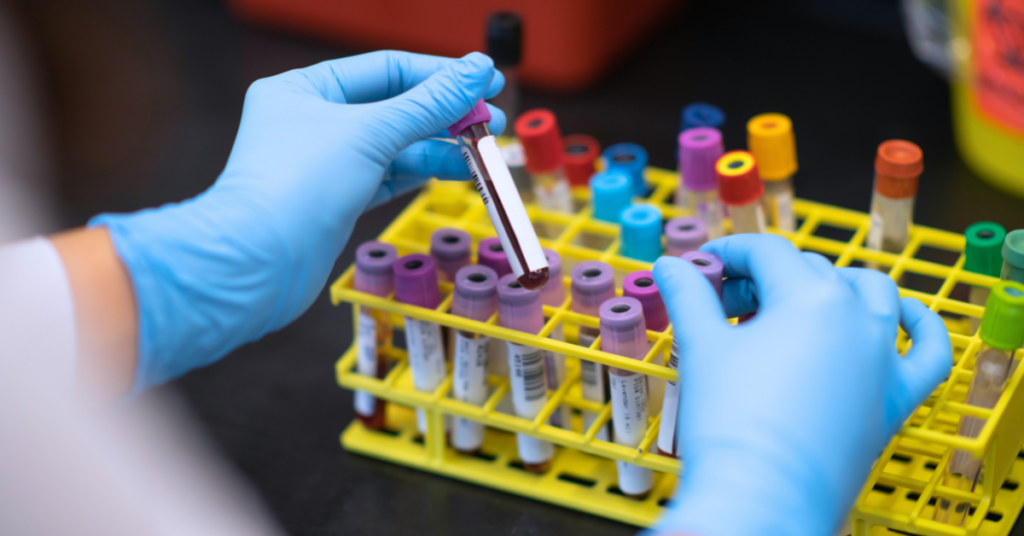Stay up to date with industry news, events, and Pycube Products
Featured Blogs
News and Events
AAMI 2024
AAMI 2024 was our biggest event of the year! Pycube showcased our cutting-edge asset management solutions, drawing strong interest in our AI-powered tools and passive RFID technology. Live demos highlighted how our solutions streamline operations by enhancing asset visibility, reducing costs, and improving patient care. Engaging with industry leaders, we gathered insights that will fuel future innovations, underscoring our commitment to advancing healthcare efficiency and safety through digital transformation.
For more details, read the full recap here.



ADLM 2024
ADLM 2024 was a fantastic opportunity for Pycube to showcase our Digital Specimen Solution, sparking high interest among attendees. Our team demonstrated how RFID technology enhances specimen tracking throughout the entire journey in pathology labs, playing a critical role in improving efficiency and accuracy. Our AI-enabled features for team training and document retrieval generated meaningful discussions, reaffirming Pycube’s dedication to innovative solutions. Watch some interview highlights from our CEO, Srikar (Sam) Yeruva, for more insights!

ASCP 2024
At ASCP 2024, Pycube showcased the transformative potential of our Digital Specimen Solution, sparking enthusiasm from attendees. Many were impressed with the solution’s real-time tracking capabilities, powered by RFID technology, to locate and track specimens with precision and efficiency. Our handheld devices, with close and long-range scanning abilities, stood out for their role in managing specimen location across facilities. This event affirmed Pycube’s commitment to driving innovation in specimen management, enabling labs to elevate both operational efficiency and patient care.
For more details, read the full recap here.


CAP 2024
CAP24 provided another opportunity for Pycube to spotlight our advanced specimen tracking solution, which resonated strongly with attendees. Our versatile handheld readers impressed with their close- and long-range tracking capabilities, allowing for precise management of specimens across facilities or even finding a single item in unexpected places. This positive feedback reinforced the impact of our technology on improving lab operations and freeing healthcare professionals to prioritize patient care.
Office Opening - October 2024
Last month marked an exciting milestone for Pycube with the grand opening of our new office in Loudoun County, VA. This special occasion was celebrated with a ribbon-cutting ceremony attended by our CEO Srikar (Sam) Yeruva, and the Loudoun County Economic Development Chamber President Tony Howard, along with their representatives. Surrounded by friends, colleagues, and community members, we reflected on our journey and looked toward the future, dedicated to advancing healthcare through innovative digital solutions.
In addition, our expansion continues internationally, with the phased opening of our new office in India. This space is designed to offer remote team members a central hub for collaboration and communication, fostering deeper connections across our global workforce. Together, these new office spaces will serve as dynamic hubs for collaboration, growth, and continued impact in healthcare transformation.








General FAQs
What are the benefits of Hospital Asset Management?
Improved Efficiency: Streamlines asset management processes, reducing the time spent searching for and managing equipment.
Cost Savings: Prevents loss and theft, reduces unnecessary purchases, and optimizes asset utilization.
Enhanced Patient Care: Ensures that necessary equipment is available and functioning, minimizing treatment delays.
Regulatory Compliance: Maintains accurate records and supports adherence to healthcare regulations and standards.
Predictive Maintenance: Enables timely maintenance, reducing equipment downtime and extending asset lifespan.
Data-Driven Decisions: Provides valuable data for informed decision-making regarding asset procurement, allocation, and maintenance.
What is asset tracking in the healthcare industry?
Asset tracking in the healthcare industry involves using technology to monitor and manage medical equipment, supplies, and other assets to ensure they are available, functioning, and in the right location when needed.
How does asset tracking improve patient care?
By ensuring that necessary medical equipment and supplies are “readily” available, tested, calibrated, compliant and clean when needed, asset tracking reduces delays in treatment, enhances the efficiency of healthcare providers, and improves overall patient outcomes.
What is RTLS technology in healthcare asset tracking?
RTLS (Real-Time Location Systems) technology is used to track the real-time location of assets, equipment, and personnel within a healthcare facility using various technologies such as RFID, Wi-Fi, infrared, or ultra-wideband (UWB).
What are the main components of an RTLS system?
An RTLS system typically includes tags or badges attached to assets, a network of sensors or readers placed throughout the facility, middleware to process location data, and a software platform for visualization, reporting, and analytics.
What types of assets can be tracked using RTLS in healthcare?
RTLS can track a wide range of assets including medical equipment (e.g., infusion pumps, ventilators), patient transport devices (e.g., wheelchairs, beds), supplies (e.g., IV bags, surgical instruments), and even personnel.
How does RTLS technology integrate with existing healthcare systems?
RTLS systems can be integrated with existing electronic health records (EHR), hospital information systems (HIS), and inventory management systems to provide a comprehensive overview of asset utilization and patient care processes.
What is an asset tracking device?
An asset tracking device, or tag, is a small device attached to an asset that allows it to be tracked using technologies such as RFID, GPS, or Bluetooth. These tags transmit data about the asset’s location and status to a central system, enabling real-time tracking and management.
Software FAQs
How will the information we already have be uploaded to the Pycube Software to get value out of the old data?
Once your existing data is uploaded into the Pycube Software, each entry is automatically date and time stamped to ensure accurate tracking. Our software is equipped to export this data seamlessly to external tools such as Excel or various reporting platforms. All data elements are stored as separate entities, allowing for comprehensive historical reporting and analysis with ease.
Can various departments be trained to use the software for their specific needs?
Yes, the locations, departments, and people that the Pycube Software utilizes are all end-user data. Therefore, a unique department or an entire hospital enterprise can utilize the Pycube Software functionality for its unique needs.
Can we locate similar assets nearby if we connect it to the CMMS? How does a CMMS connection benefit the integration of existing equipment data into Pycube's product?
A CMMS connection streamlines the integration of your existing equipment data, including details like category, model name, serial number, and PM frequency, into our software. It also enables seamless updates of the last known equipment location and collection status, ensuring accurate data synchronization with your CMMS.
Can your platform integrate with our CMMS?
Yes, our platform can integrate with your CMMS. We utilize open API technology, allowing us to build a real-time interface when the CMMS vendor is cooperative. In cases where real-time integration isn’t feasible, we offer a batch file transfer interface, enabling regular data exchange, such as daily updates.
What are the different tag types?
We use industry-standard passive tags that do not require batteries. These tags come in various forms and attributes, including size, durability, adherence, temperature resistance, readability distance, tackiness, and coating. Our sales and customer service team works closely with the customer to select the best RFID tag tailored to their specific needs.
How is this done without batteries?
The RFID reader emits energy that activates a chip embedded in the passive RFID tag. This energy powers the chip to send the tag’s information back to the reader, all without the need for batteries.
What are the typical read ranges of the readers?
Read ranges vary based on several factors, including transmit power, reader antenna type, tag size, tag type, and the environment.
What reader types do we offer?
Our customers utilize fixed and mobile readers.
What kind of support and training does Pycube provide for new users?
Pycube offers comprehensive support through our customer success team, consisting of professionals with years of experience in applicable industries, including RTLS, telecommunications, warehousing, and medical device industries.
Can Pycube's solutions be customized to fit our specific needs?
Yes, the Pycube Software is fully customizable, allowing it to adapt to the unique requirements of individual departments or entire hospital enterprises.
Are there any additional costs associated with system updates or maintenance?
System updates and maintenance are included in the Pycube subscription fee.
How does Pycube handle system downtime or technical issues?
Pycube’s cloud-based solution, hosted on Amazon Web Services (AWS), is designed for reliability and high uptime. Any end user or technical issues are swiftly addressed by our dedicated customer success team.
Can Pycube’s solutions be integrated with existing hospital IT infrastructure?
Yes, Pycube’s solutions can integrate seamlessly with a hospital’s CMMS. This connection allows for easy transfer of existing equipment data (category, model name, serial #, PM frequency, etc.) into our system and enables us to update the CMMS with the latest equipment locations and statuses.
What kind of reporting and analytics features are included?
Pycube’s software includes numerous real-time dashboards that offer analytics on monitored, tagged, and collected assets and assets due for PM. Additionally, bar charts, line graphs, and export options to Excel or other reports are available for comprehensive reporting.
How frequently is the data updated in Pycube’s system?
Data in the Pycube Software is updated every time an RFID tag is scanned. Each scan adds new data into the system in real-time, ensuring the most current information is always available.
What are the minimum system requirements for running Pycube’s solutions?
To implement Pycube’s solutions, you’ll need RFID tags, Wi-Fi-connected mobile or fixed RFID readers, and an active Internet connection.



